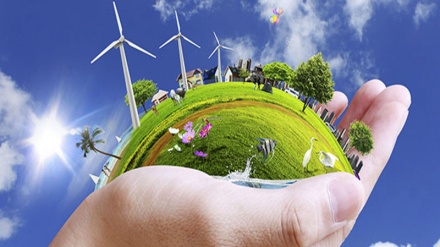We Only Have One Planet to Live On (32)
Welcome to the 32nd weekly episode of the series We Only Have One Planet to Live On. Today, we study the relationship between poverty and environment.
In the previous weeks, we spoke of the pollutants which currently threaten the environment. In the view of environmentalists, a string of factors highly contribute to the mounting destruction of the environment. One of these parameters is poverty in human communities.
One of the most destructive problems of the planet is the phenomenon of poverty, which has left a negative impact on mankind and environment, both. As of the 1970s, a global consensus took shape that pointed to the inseparable relationship between poverty and environment.
According to experts, poverty is the root cause of global environmental problems. Thus, efforts made to study environmental concerns would be pointless in the absence of a comprehensive approach which would research the hidden aspects of global poverty and inequities.
The relationship between poverty and environment turned into a heated dispute throughout the UN Conference in Stockholm, in the year 1974. In this confab, the former Indian premier, Indira Gandhi, attributed pollution to poverty and lack of development. Her report noted that growth of population and lack of access to land piles up pressure on the poor, and prompts them to excessively utilize the environment in the outskirts of cities and villages, thereby destroying the resources. Meanwhile, this process, in turn, fuels poverty, and threatens the survival of the poor in the long run.
Meanwhile, the existing figures confirm this fact. Today, the irregular growth of population has mounted hardships and has pressed the economic network of countries. These conditions, on one hand, have fueled the destruction of the environment in short term, and have, on the other hand, uprooted some means of livelihood. Although the destruction of environment and the ensuing spread of poverty are global phenomena and are observed in developed and Third World countries, both, these phenomena are more evident and common in Third World countries.
The report released by the UN Development Plan in the year 2014 shows although the rate of poverty has declined in the world, still one third of the international community, amounting to 2.2 billion people, are mired in poverty in 91 countries, round the world. Moreover, 800 million others are on the verge of poverty. The majority of the poor people live in regions; which suffer from a destructed environment. At times, the poor mainly contribute to the destruction of their environment. They have no option other than irregular and excessive usage of the accessible sources in order to secure their continued existence. In this manner, the relationship between poverty and environment has currently expedited the rate of destruction of the environment.
Poverty that has manifested itself in cutting forest trees; irregular grazing of livestock in meadows; excessively using farmlands; unequal access to sources of energy; and mounting drought; has threatened disadvantaged families, forcing them to push the environment toward a crisis as the result of pressures piled up on them. Poor people have no choice other than excessive usage of sources to secure their survival. For instance, due to their need for fuel, they are forced to cut trees and bushes, which leads to soil erosion and destructive flashfloods.
Today, despite the rising number of sources of energy; still many people in poor and developing countries use logs of wood for heating and cooking, which in turn contributes to destruction of the environment. For instance, in Nepal, 97% of the consumed energy is provided from sources of wood. Moreover, countries such as Ethiopia and Burkina Faso are 90% dependent on wooden logs for meeting their need for sources of energy. Thus, inequality of access to sources of energy has left the poor with no option, thereby forcing them to destroy the basic sources, which are tied to their future livelihood.
One of the other factors that cause damage to the environment is lack of knowledge on the means to protect the environment. Especially throughout the rural regions, the lack of knowledge of villagers over the appropriate principles of plowing and farming leads to soil erosion. Furthermore, excessive usage of chemical fertilizers inflicts more harm on the environment. Poor culture also contributes to destruction of environment such as littering the living environment.
As it was mentioned, there is a reciprocal relationship between poverty and destruction of the environment. Global studies prove that the poor are hit the hardest by environmental challenges, and climate change. A reliable report released in the year 2014 shows that environmental challenges and climate change will leave an increasingly negative impact on the lives of poor people. Some analysts believe that the environmental challenges and the ensuing droughts in Syria, in addition to emergence of unrests in that country have led to widespread poverty among farmers. As of 2006 to 2011, Syria suffered one of the worst droughts in recent centuries. Furthermore, according to UN, 85% of livestock in Syria lost their lives in this phase in time. Another UN report says over three million people in Syria are mired in poverty as the consequence of drought and famine.
Meanwhile, poverty is not the only factor that leads to destruction of the environment. There are other factors involved, such as inequalities; wrong political and administrative structures; mismanagement; shortcomings of the market; and negligence of the role and participation of local communities in management and utilization of the environmental sources. In fact, it should be said that poverty, coupled with other social, economic, and cultural factors leaves a destructive impact on the environment, and negligence of these factors would lead to adoption of wrong approaches.
MR/MG


